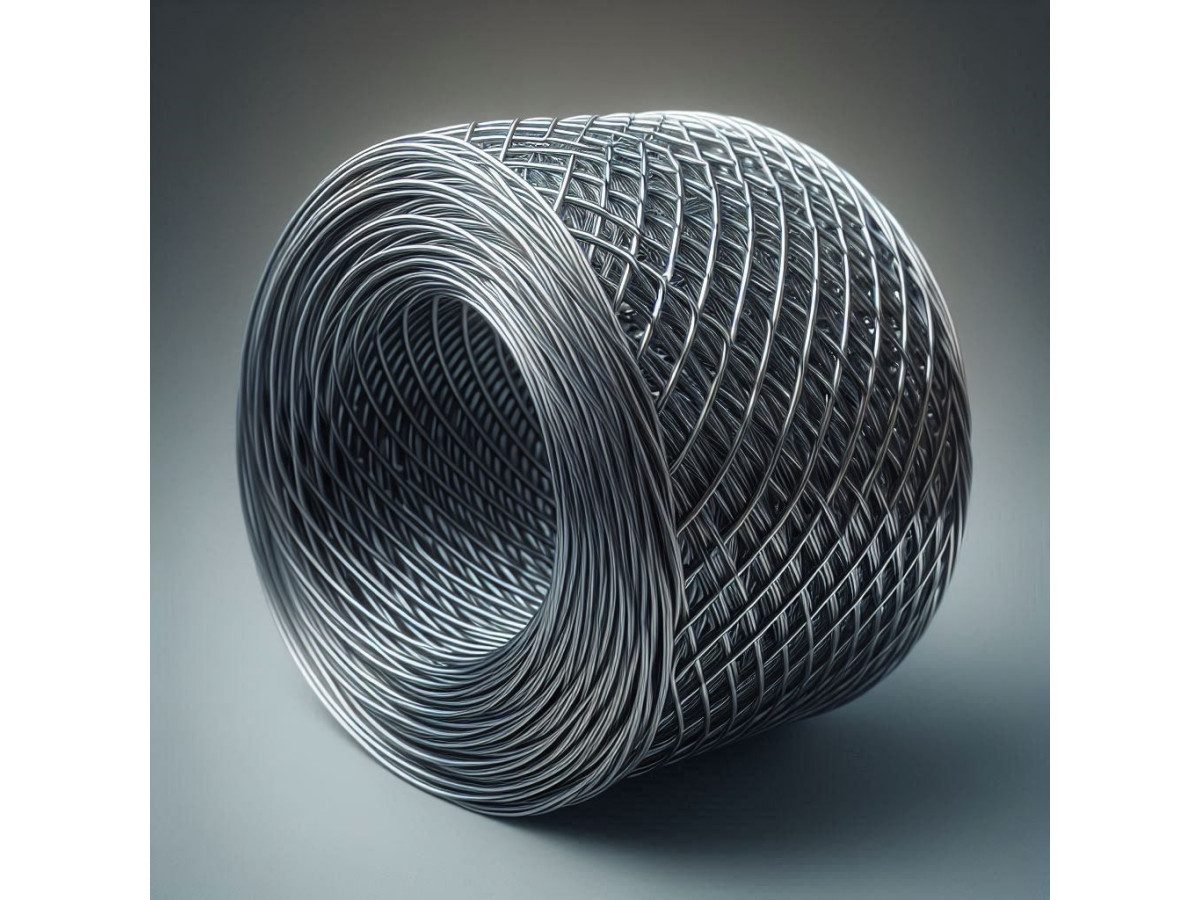Woven stainless mesh is produced using the same technologies as fabrics with the replacement of fiber threads with steel wire. It is included in the group of materials classified as ferrous metal products, and is produced in significant quantities by domestic metallurgical plants.
Design and operational features of woven stainless mesh
The introduction of chromium and nickel into the composition as alloying additives during smelting makes the steel immune to the effects of most chemically active substances while maintaining all the technical parameters useful for resisting mechanical loads. As a result, made from it woven stainless mesh has a number of positive properties:
- Maintains integrity when stretched under the weight of loads placed above.
- Very long service life.
- No toxic releases into the environment.
The last of these properties turned out to be extremely important for the food industry. In the modern world, the regulatory requirements of standards are high not only in relation to food products, but also to the equipment used for their production. In its development, woven stainless mesh and other types of rolled products from this material are increasingly being used, which are absolutely harmless to the human body even after interaction with many active substances:
- organic acids contained in vegetables and fruits;
- alcohols, fats, proteins, carbohydrates and other chemical compounds present in food;
- used for heat treatment with superheated steam.
With a reasonable approach to the selection of material, it is possible to satisfy all the requirements of ecologists, nutritionists and doctors.
Differences from analogues from other materials
When choosing the optimal material for solving a specific problem, many nuances should be taken into account. The wide range of items offered on the market and the abundance of combinations of different technical parameters make it possible to do this almost always, however, in order to avoid mistakes, you need to have the necessary knowledge. Comparing woven stainless mesh with analogues from other materials allows even people far from engineering to supplement their luggage.
Regular steel
When melting, no expensive alloying additives are introduced into structural steel, so its price is significantly lower than that of stainless steel. With consumption estimated in tons, the financial benefit from savings on the purchase of raw materials reaches impressive amounts, so wherever possible it is better to use conventional steel mesh. In terms of strength under normal conditions, it is not inferior to stainless steel, and the appearance of rust is not always critical, and there are plenty of cheaper methods of dealing with it instead of alloying. For these reasons, it is widely used in construction for reinforcing concrete foundations, walls and ceilings. Also, a large amount is spent on assembling all kinds of barrier structures.
Galvanization
Products from galvanized mesh have proven themselves well in outdoor conditions. In the open air, under the influence of humid atmospheric air, the steel gradually oxidizes, an unpleasant-looking coating of loose rust appears, and with the passage of time there comes a critical moment of exposure to destructive factors, starting from which the strength characteristics no longer correspond to the maximum permissible design minimum. Applying a thin layer of zinc to the outer surface creates reliable protection for iron, working on the principle of galvanic cells, and completely solves the problem of extending service life. As a result, this material is very popular in agriculture for fencing cattle walking areas, assembling cages and enclosures for keeping poultry, rabbits, and nutria. It is, of course, also possible to use stainless steel for these purposes, but it would be too wasteful in economic terms.
Copper, brass and other non-ferrous metals and alloys
In terms of chemical resistance to aggressive environments, some of them, for example brass mesh, even surpass stainless steel, but are somewhat inferior to it in terms of strength characteristics, and most importantly, much more expensive. Therefore, in many samples of laboratory equipment and factory installations for the synthesis of various substances, non-ferrous metallurgy products are used as a starting material for the creation of certain elements. unprofitable for financial reasons, and should only be done in cases where it is impossible to comply with regulatory requirements when replacing them.
From the above considerations, it is easy to conclude that woven stainless mesh will be the best option for solving many problems.

